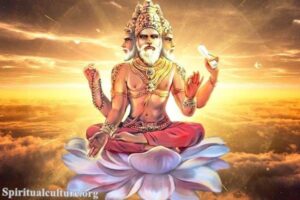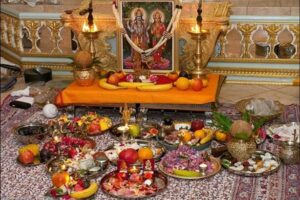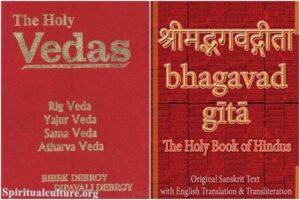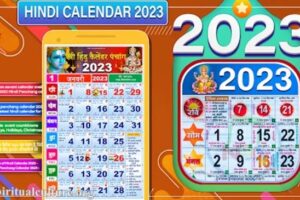It symbolizes the victory of light over darkness and is traditionally observed by lighting diyas (small oil lamps), decorating homes with rangoli designs, and performing puja (worship) to Lakshmi, the Hindu goddess of wealth and prosperity.
People also exchange gifts, feast on sweets, and participate in fireworks displays during Diwali.
What is the Diwali festival?
Diwali is a Hindu festival of lights, celebrated every year in autumn in the northern hemisphere (spring in the southern hemisphere). It is a five-day-long festival that symbolizes the victory of light over darkness, good over evil, and knowledge over ignorance. People decorate their homes with lights and lanterns, exchange sweets and gifts, perform religious rituals, and light fireworks.
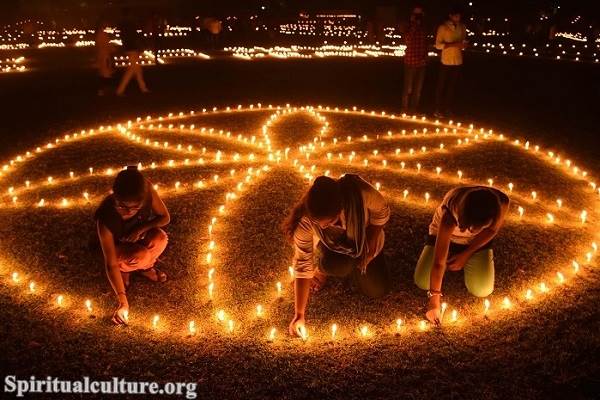
Diwali is one of the biggest and brightest festivals in India and is also celebrated by Hindu communities around the world.
Why is Diwali celebrated?
Diwali is celebrated to commemorate the return of Lord Rama, along with his wife Sita and brother Lakshmana, to Ayodhya after defeating the demon-king Ravana and completing a 14-year exile. It is also said to celebrate the victory of Lord Vishnu, who triumphed over the demon king Bali. Additionally, Diwali is a celebration of the triumph of light over darkness, good over evil, and knowledge over ignorance.
The Diwali festival is a symbol of hope, happiness, and renewal, and is an opportunity for families and friends to come together and share in the joy and festivities.
How is Diwali Festival celebrated?
Diwali is celebrated with great enthusiasm and joy, with various traditional and cultural activities. Some common ways of celebrating Diwali include:
– Lighting lamps and candles: People decorate their homes with clay lamps, candles, and fairy lights to symbolize the triumph of light over darkness.
– Rangoli and decorations: Rangoli is a traditional art form in which colorful designs are created on the floor using rice powder, flowers, and other materials. Homes are also decorated with colorful lights, flowers, and rangolis.
– Puja (worship): People perform puja (prayer) to Lord Ganesha, the Hindu god of wisdom and good fortune, and to the goddess of wealth, Lakshmi.
– Fireworks: Bursting firecrackers and setting off fireworks is an important part of Diwali celebrations.
– Gift-giving: Friends and family exchange sweets, gifts, and good wishes with one another.
– Feasting: People prepare and enjoy delicious traditional foods, such as sweets, savories, and feasts.
– New clothes: Wearing new clothes is a common tradition during Diwali, as people want to look their best to celebrate the festival.
– Community events: Diwali is a time for communities to come together and celebrate. People organize large-scale events, such as musical programs, cultural shows, and community feasts.
– Charity and good deeds: Diwali is also seen as a time for giving back to others and helping those in need. People may donate money or goods to those less fortunate, or volunteer their time and efforts to help others.
– Business and financial activities: For many people, Diwali is a time to start new business ventures, make financial investments, or start new projects. It is considered an auspicious time for new beginnings and good fortune.
These are some of the ways Diwali is celebrated, and the festivities may vary across different regions and communities in India and around the world.
Diwali traditions
Diwali is a Hindu festival celebrated by millions of people around the world and is marked by several traditional customs and rituals. Some of the most common Diwali traditions include:
- Cleaning and Decorating Homes: In the weeks leading up to Diwali, people clean and decorate their homes, removing clutter and creating a welcoming atmosphere for the festival. Homes are adorned with colorful rangolis, lights, and decorations, and doorways and windows are adorned with torans, garlands of flowers, and lights.
- Puja and Prayers: Diwali is a time for performing puja and prayers to Hindu gods and goddesses, particularly the goddess of wealth, Lakshmi. People offer prayers, food, and other offerings to the gods, seeking blessings and prosperity for the coming year.
- Lighting Diyas and Candles: The lighting of diyas and candles is a central part of the Diwali celebration, symbolizing the triumph of light over darkness, knowledge over ignorance, and good over evil. People light diyas and candles in their homes, on balconies and rooftops, and in public spaces.
- Exchanging Sweets and Gifts: Diwali is a time for sharing sweets and gifts with friends, family, and loved ones. People exchange sweets such as barfi, laddu, and peda, as well as gifts such as clothes, jewelry, and home decor items.
- Fireworks and Crackers: In some regions, fireworks and crackers are an important part of the Diwali celebration, providing a spectacular display of lights and sounds.
- Family Gatherings: Diwali is a time for family gatherings, with people returning home from far-off places to be with their loved ones. Family members come together to celebrate the festival, exchange gifts, and share meals.
These are some of the most common Diwali traditions, but the specific celebrations and customs may vary across different regions and communities in India and around the world. Despite these variations, the underlying themes of Diwali remain the same: the triumph of light over darkness, knowledge over ignorance, and good over evil.
Diwali food
During Diwali, people enjoy a variety of traditional foods, both sweet and savory. Some popular Diwali sweets include:
– Ladoo: A round, sweet ball made from flour, sugar, and ghee (clarified butter)
– Barfi: A sweet made from condensed milk, sugar, and flavorings, often shaped into squares or diamonds
– Gulab Jamun: Deep-fried dough balls soaked in a sweet syrup
– Rasgulla: Soft, spongy balls made from chhena (cottage cheese) and syrup
– Jalebi: A sweet, fried batter that is shaped into spirals and soaked in syrup
In addition to sweets, Diwali is also a time to enjoy savory foods, such as:
– Samosas: Triangular-shaped pastries filled with spiced vegetables or meat
– Kachori: A deep-fried pastry filled with spiced lentils or peas
– Dhokla: A steamed snack made from fermented chickpea flour and spices
– Aloo Tikki: A potato-based snack, often served with chutney or tamarind sauce
These are some of the popular foods enjoyed during Diwali, and the specific dishes may vary across different regions and communities in India and around the world.
Diwali story
Here are more details about the two stories commonly associated with Diwali:
The Story of Lord Rama and Sita
This story is told in the Hindu epic, the Ramayana. According to the tale, Lord Rama was the prince of Ayodhya and was banished to the forest for 14 years by his father, King Dasharatha. During his exile, Lord Rama fought and defeated the demon king Ravana, who had abducted Rama’s wife Sita. After defeating Ravana, Lord Rama, Sita, and his brother Lakshmana returned to Ayodhya, where the people lit the way for their triumphal return with lamps and candles. To this day, Diwali is celebrated to mark Lord Rama’s victory over evil and his return to Ayodhya.
The Story of King Bali and Lord Vishnu
This story is about King Bali, who was a generous and just ruler and was loved by his people. However, Lord Vishnu, one of the Hindu gods, was concerned that King Bali’s power would grow to the point where he would conquer the gods and take over heaven. To prevent this, Lord Vishnu appeared on earth in the form of a dwarf, Vamana, and approached King Bali, asking for three steps of land. King Bali, being a generous king, granted the request, not realizing that Lord Vishnu would grow to enormous size with each step and cover the entire earth and the underworld, leaving only heaven for the gods. Lord Vishnu then pushed King Bali to the underworld but granted him the blessing to rule there and the promise that he would return to the earth once a year, during the festival of Diwali. This story symbolizes the victory of good over evil, and the importance of humility and generosity.
These stories are important to Hindu mythology and are part of the cultural and spiritual fabric of the Diwali celebration. The specific details and interpretations of these stories may vary across different regions and communities in India and around the world.
How long does Diwali last?
Diwali typically lasts for five days, although the specific duration and events may vary across different regions and communities in India and around the world. The five days of Diwali are traditionally known as:
- Dhanteras: Celebrated two days before Diwali, this day is dedicated to the worship of wealth and prosperity, and is also considered an auspicious day to purchase gold or silver.
- Naraka Chaturdasi: This day marks the defeat of the demon king Narakasura by Lord Krishna, and is also known as Choti Diwali.
- Diwali or Lakshmi Puja: The main day of the festival, celebrated on the third day, is dedicated to the worship of the goddess of wealth, Lakshmi, and the lighting of diyas and candles.
- Govardhan Puja: This day is dedicated to the worship of the Hindu god Lord Krishna, who is said to have lifted the Govardhan mountain to protect his people from a storm.
- Bhai Dooj: The final day of the festival is dedicated to the bond between brothers and sisters, and is celebrated by performing a puja and exchanging gifts.
These are the traditional five days of Diwali, but the specific celebrations and customs may vary across different regions and communities in India and around the world.
Diwali meaning in English
The word “Diwali” is derived from the Sanskrit word “Deepavali” which means “a row of lights.” It is a Hindu festival celebrated annually in the fall, typically in October or November.
Diwali is also known as the Festival of Lights and is celebrated by lighting diyas and candles, decorating homes and public spaces, exchanging gifts and sweets, and performing puja and prayers to Hindu gods and goddesses, particularly the goddess of wealth, Lakshmi. The festival symbolizes the victory of light over darkness, good over evil, and knowledge over ignorance.
Diwali is one of the most important and widely celebrated festivals in India and by the Hindu community around the world.
Why is Diwali called the festival of lights?
Diwali is called the “Festival of Lights” because of the tradition of lighting diyas (small clay lamps) and candles in homes and public spaces during the celebration. The lighting of diyas and candles is believed to symbolize the triumph of light over darkness, knowledge over ignorance, and good over evil.
During Diwali, people light diyas in their homes and decorate their doorways and windows with rangolis, candles, and colorful lights. The illumination of homes and public spaces is seen as a way of welcoming the Hindu gods and goddesses, particularly the goddess of wealth, Lakshmi, and of dispelling negativity and evil.
The tradition of lighting diyas and candles during Diwali has been passed down for generations and continues to be an important part of the Festival of Lights, creating a warm and joyful atmosphere throughout the community.
What are 10 reasons to celebrate Diwali?
- The victory of light over darkness: Diwali represents the victory of light over darkness, and symbolizes hope, positivity, and enlightenment.
- Celebration of Rama’s return: Diwali marks the return of Lord Rama to his kingdom of Ayodhya after defeating the demon king Ravana.
- Commemoration of Lakshmi Puja: Diwali is also a celebration of the Hindu goddess of wealth, prosperity, and good fortune, Lakshmi.
- Bonding with family and friends: Diwali is a time for families and friends to come together and celebrate, strengthening relationships and creating memories.
- Exchange of gifts and sweets: During Diwali, it is traditional to exchange gifts and sweets with loved ones, spreading joy and generosity.
- Decorating homes with lights and diyas: Homes are beautifully decorated with lights and diyas during Diwali, creating a warm and festive atmosphere.
- Celebration of new beginnings: Diwali is a time for new beginnings, for starting fresh and setting new goals for the future.
- Cultural and religious significance: Diwali holds great cultural and religious significance for Hindus, and is a time for spiritual reflection and devotion.
- Enjoying traditional foods and sweets: During Diwali, it is customary to prepare and enjoy delicious traditional foods and sweets, adding to the festive atmosphere.
- Bringing communities together: Diwali brings together communities and promotes unity and understanding, as people come together to celebrate and spread joy.
